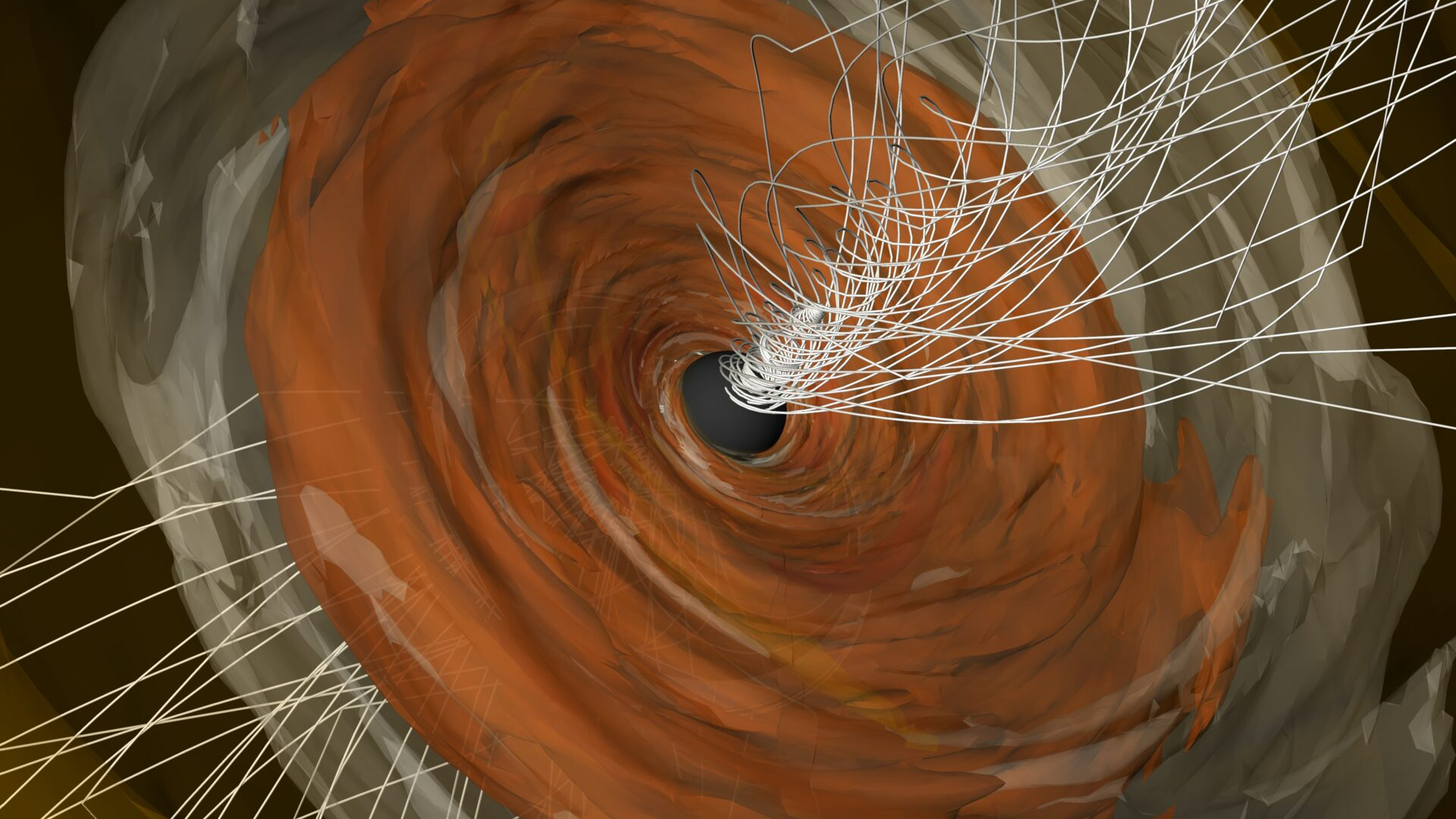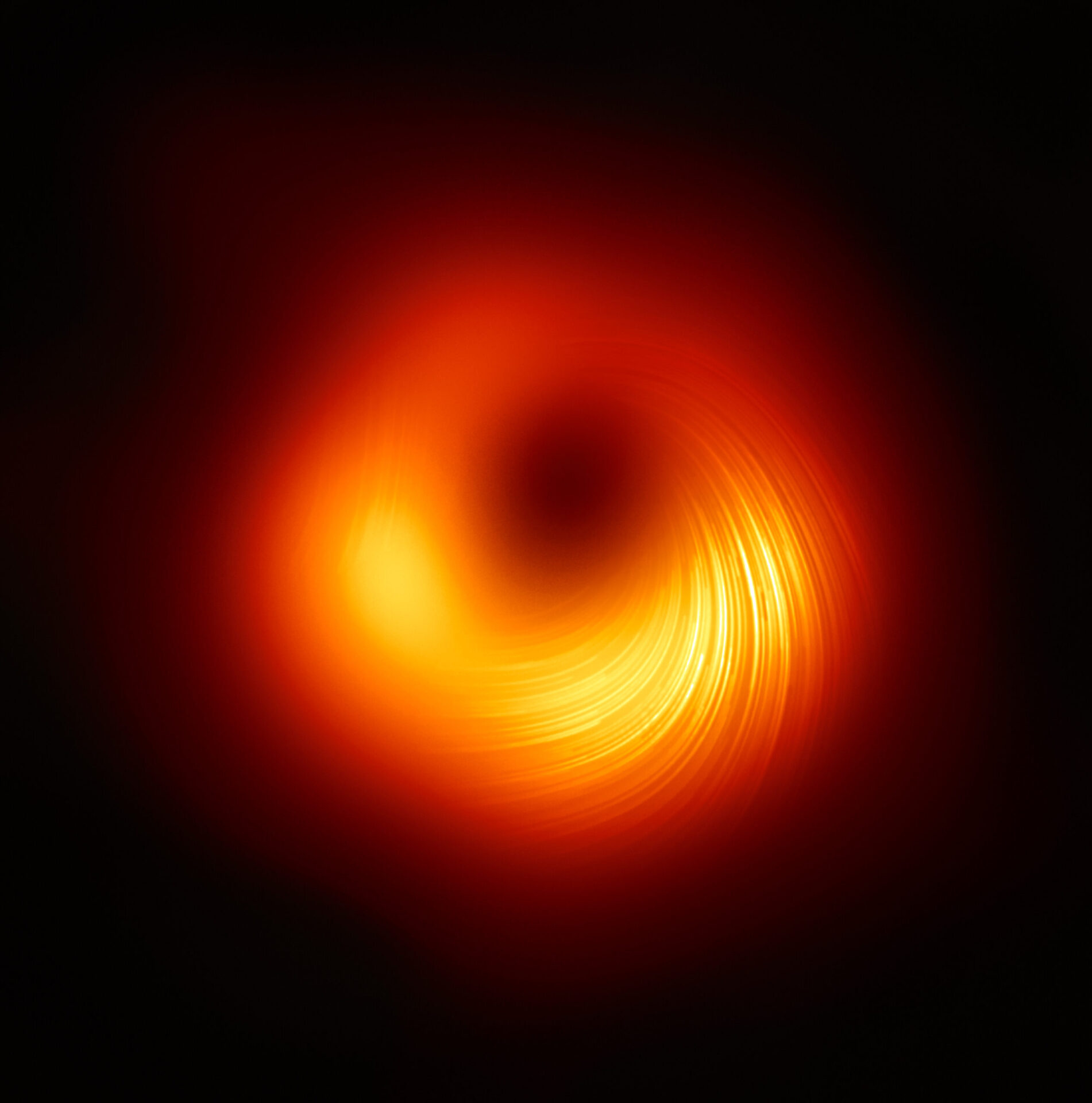
Spiraling light at the edge of a distant supermassive black hole could help matter escape from being consumed by this cosmic titan.
The supermassive black hole of M87 — also known as M87* — has a mass equal to around 6.5 billion suns. It especially came to the public's attention in 2019 when an image of M87*, captured by the Event Horizon Telescope (EHT), was the first glimpse of the surrounding environment of a black hole ever obtained by humanity.
Now, the EHT Collaboration, who was behind that historic image, have modeled the way the electric fields of light rotate around the supermassive black hole, which is located around 54 million light-years away from Earth. This polarized light, whose waves vibrate on a single plane, carries with it information about the magnetic field and the particles that are accelerated to near-light-speeds around the black hole.
Scientists now suggest those magnetic fields may deprive M87's monster black hole of a meal, instead launching this matter into space as highly collimated (or parallel) jets that blast out at almost the speed of light. The constantly rotating light around M87* is also known as circular polarization.
Related: 1st black hole imaged by humanity is confirmed to be spinning, study finds
"Circular polarization is the final signal we looked for in the EHT's first observations of the M87 black hole, and it (the polarization) was by far the hardest to analyze," Andrew Chael, study co-author and project coordinator at Princeton University, said in a statement.
"These new results give us confidence that our picture of a strong magnetic field permeating the hot gas surrounding the black hole is the right one," added Chael, an associate research scholar with the Princeton Gravity Initiative — which combines the university's astrophysics, mathematics and physics departments to seek the nature of gravity. "The unprecedented EHT observations are allowing us to answer long-standing questions," he added, "about how black holes consume matter and launch jets outside their host galaxies."
Two years after the release of the image of the supermassive black hole in M87, in 2021, the EHT Collaboration released a second stunning look. The newer image showed, for the very first time, polarized light around a black hole. (Polarized light has a different orientation and brightness than unpolarized light.) The 2021 data also revealed the direction of oscillating (vibrating) electric fields, providing the first hint that magnetic fields around M87* are strong and ordered.
Researchers next took a closer look using the Atacama Large Millimeter/submillimeter Array (ALMA) located in Northern Chile, which provided calibration by acting as a reference antenna for the EHT. ALMA is an array of 66 antennas in the Chilean desert that can peer through cosmic dusty environments, like black holes, to seek longer wavelengths of light.

ALMA is part of a network of EHT's radio telescopes around the world, which come together to create a virtual instrument the size of Earth. (The technique is also known as very long baseline interferometry, or VLBI).
The new analysis of the ALMA data, collected in 2017, shows how the electric fields of light twist around in a linear direction, once again providing evidence for the strong magnetic fields glimpsed in 2021. Using a computer simulation, the EHT scientists suggest these strong magnetic fields push back on matter that is falling toward M87*.
The magnetic fields also launch jets of matter away from M87* at velocities near the speed of light before the matter passes through the black hole's event horizon — the point at which nothing can escape a black hole, even light — and add to the black holes already tremendous mass. (This means that the EHT cannot image black holes themselves, as they emit no light, but each black hole's surroundings do glow in detectable radiation.)
The researchers continue to analyze the data for stronger evidence of linear polarization, as they say their work could " still leave room for improvement," Hugo Messias, a study co-author who leads the VLBI team at ALMA, said in the same statement. "This circularly polarized light that has now been detected is very faint, but in more recent years, EHT has been observing with more stations and improved sensitivity — meaning that the ongoing analysis will likely provide us with new tips on the secrets around M87*."
The EHT Collaboration is collectively credited as the first author in the new EHT findings, which are detailed in a Wednesday (Nov. 8) paper published in the Astrophysical Journal.







